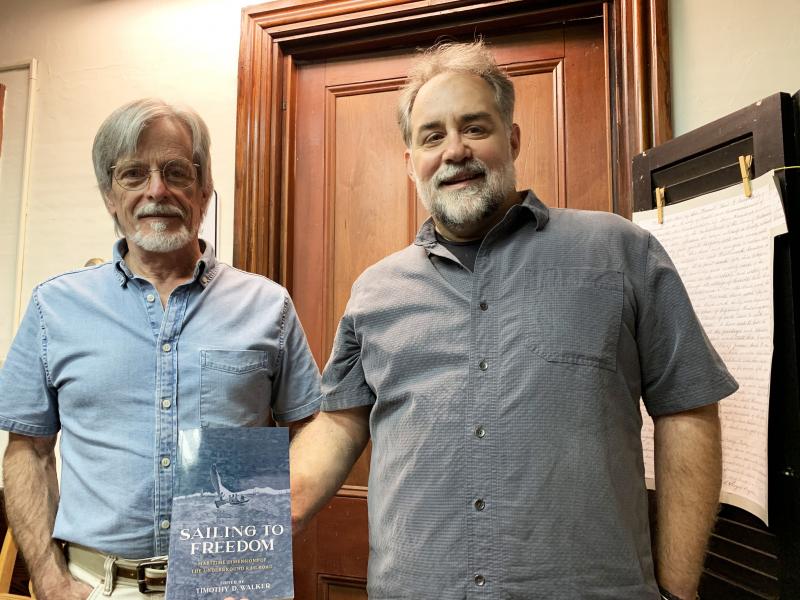Book by UMass Dartmouth historians explores sea routes used by escaped slaves
When one thinks about the Underground Railroad, what typically comes to mind is the overland routes escaped slaves took from the antebellum South to find their freedom in the North.
While that was common early on, Timothy Walker, a professor of history at UMass Dartmouth, found that as the nineteenth century progressed, an increasing number of enslaved people had fled northward along the Atlantic seaboard.
Many of these escaped slaves ended up on the South Coast, Walker said.
“Almost every single successful escape from the Deep South happens over water — at least the ones we can document,” he said.
Wanting to highlight this lesser-known aspect of pre-Civil War America, he and other historians from around the country worked together sifting through primary sources spanning decades. Their work helped to better contextualize how escapes were managed along the East Coast in the UMass Press-published book “Sailing to Freedom: Maritime Dimensions of the Underground Railroad.”
The book consists of 10 essays beginning in the Deep South and concluding in New England — which was a hotbed for the abolition of slavery at the time. Walker edited the book.
In addition to the Dartmouth historian, contributors include David S. Cecelski, Elysa Engelman, Kathryn Grover, Megan Jeffreys, Cheryl Janifer LaRoche, Mirelle Luecke, Cassandra Newby-Alexander, Michael D. Thompson, and Len Travers — a former colleague of Walker’s on the Dartmouth campus.
Work began on the book around 10 years ago.
Walker said it came about after a historian Kathryn Grover found that a very large number of New Bedford’s African American population had identified their place of birth as south of the Mason-Dixon line.
“[That] was a pretty strong indication that those persons had come to New Bedford as fugitives from enslavement,” he said.
Upon further research thanks to a federal grant, Walker and his colleagues found that “a very large proportion” of those who escaped to the South Coast had done so by sea.
“It began to become very clear to us that there was this great, untold story about the maritime side of the Underground Railroad,” Walker said.
What especially caught the attention of the historians was the number of escaped slaves who arrived from the Deep South.
According to Walker, overland escapes from the South typically came from plantations that were only a couple of days walk from a free state. Most of those in the Deep South, he said, escaped to either Mexico or colonies in the Caribbean — both of which outlawed slavery before the United States.
It’s along the waterfronts of cities like Charleston, South Carolina where Walker found that many former enslaved people escaped from.
“The easiest way for you to escape was with a northbound vessel,” Walker said. “If you could be hidden… you’re going to be in a free state within a few days.”
A lot of the research, the UMass Dartmouth professor noted, was done using primary sources such as legal ads in newspapers dating back to 1772.
One such ad included a public notice from Captain William Taber in the New Bedford Marine Journal in 1797. Taber’s ship ran between Virginia and New Bedford and the captain advertised that he had an escaped slave “who had concealed himself unbeknown to me.”
Under the Fugitive Slave Act of 1793, masters of vessels were liable if they carried a slave to a free state knowingly or unknowingly.
Walker said this ad was to provide Taber “legal cover,” as the captain also noted that “any person claiming him will know by this information where he is” and that “every legal method has been taken to prevent the owner from losing the property.”
“This was in a weekly publication,” Walker said. “Where the guy was at the time of publication was anyone’s guess.”
This book, Walker said, is what he hopes is the first of many that document this lesser-known part of the Underground Railroad.
“Sailing to Freedom, The Maritime Underground Railroad” is available at the New Bedford Whaling Museum, Amazon, and through the UMass Press website.














